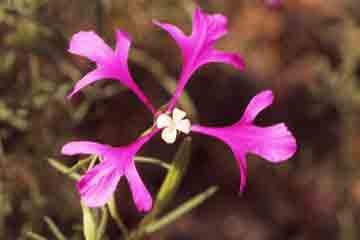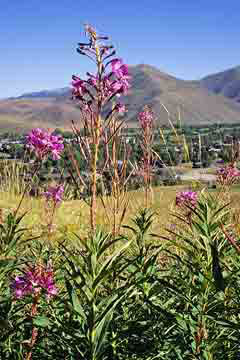

Fireweed, Chamerion angustifolium (L.) Holub. (left, right, above) Because the common fireweed prefers disturbed ground it is considered a weed, an undeserved reputation at least in our mountains. It spreads by underground stems reclaiming ground after wildfires (above). As reforestation proceeds, fireweeds are replaced by other flora. Four-petaled flowers and a stem-like flower tube are family characteristics. The tube contains the ovary; this matures into a long pod-like seed capsule. They have recently been reclassified from genus Epilobium to Chamerion, a pre-Linnaean name for the fireweed (or rosebay willow-weed as it is known in Europe).
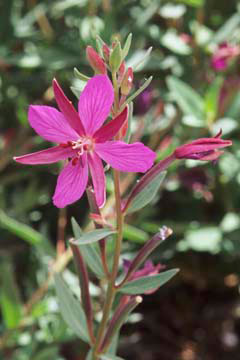
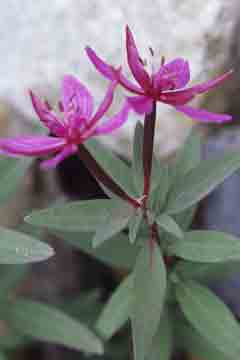
Common willow-weed, Epilobium ciliatum Raf. var. glandulosum (Lehm.) Dorn (right), has loose clusters of tiny (less than 1/4 inch), bell-shaped flowers with four deeply notched petals. It blooms from July to mid-August along mountain streams and in other moist situations. Its stems and foliage feel sticky hence the name glandulosum (a “gland,” botanically implies a secreting cell with sticky secretions). Note the long tubular “stem” that houses an ovary; this matures into a pod-like seed capsule.
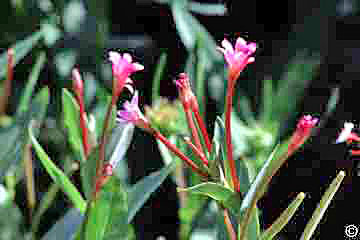
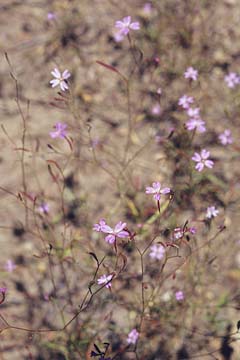
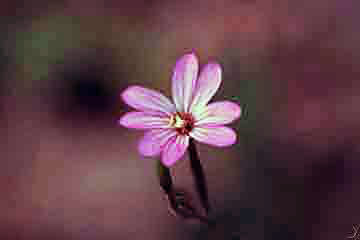
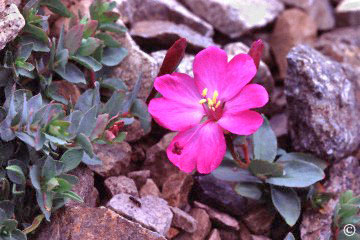
Alpine willow-weed, Epilobium lactiflorum Hausskn. (right). The four-petaled flowers of the alpine willowweed are tiny, as is the plant overall. Until recently its species name was Epilobium alpinum L., but because of confusion with other species of the same name, it has been reclassified as Epilobium lactiflorum. Although its species name means milky- flowered, its flowers may range in color from pure white through white with pink veins (as in the one shown here), to fully pink or even rose. Any small white to pink, high ranging epilobium with slightly serrated leaves will most likely be this plant.
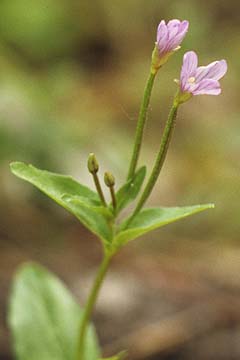
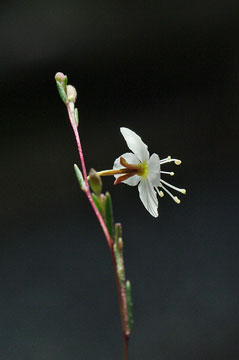

Spreading groundsmoke, Gayophytum diffusum Torr. & A. Gray var. diffusum (left, right, above). While hiking our trails in mid- to late summer, one often sees this wispy plant growing on dry ground. Dense clusters about a foot high are made up of many thin, branched stems (above). These bear small white-to-pink flowers less than 1/4" wide. Although it takes magnification, one can see that the four-petaled flowers have sharply reflexed (turned back) bracts below the petals (left). The stems also bear tiny lanceolate leaves and sausage-shaped, seed-bearing fruit. The pods split open when ripe to release plumed seeds (right). This weedy little plant is common in the western part of the United States and in Canada . The genus is named for French naturalist Claude Gay (1800-1873), best known for his comprehensive flora of Chilean plants.
A smaller variety (not shown here), Gayophytum diffusum var. parviflora Lewis & Szweykowski, is only about 6" high and its tiny flowers are less than 1/8" an inch across. The two varieties are similar except fot their size.

